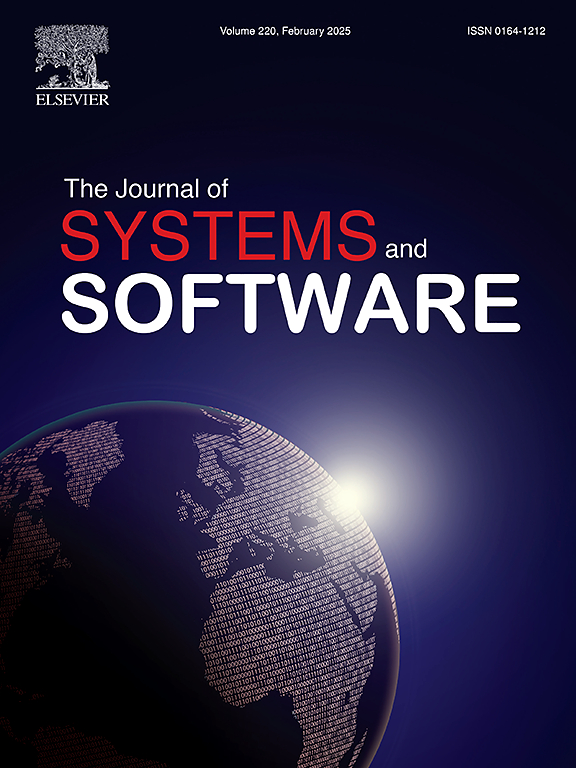Fault localization of AI-enabled cyber–physical systems by exploiting temporal neuron activation
IF 3.7
2区 计算机科学
Q1 COMPUTER SCIENCE, SOFTWARE ENGINEERING
引用次数: 0
Abstract
Modern cyber–physical systems (CPS) are evolving to integrate deep neural networks (DNNs) as controllers, leading to the emergence of AI-enabled CPSs. An inadequately trained DNN controller may produce incorrect control actions, exposing the system to safety risks. Therefore, it is crucial to localize the faulty neurons of the DNN controller responsible for the wrong decisions. However, since an unsafe system behavior typically arises from a sequence of control actions, establishing a connection between unsafe behaviors and faulty neurons is challenging. To address this problem, we propose Tactical that localizes faults in an AI-enabled CPS by exploiting temporal neuron activation criteria that capture temporal aspects of the DNN controller inferences. Specifically, based on testing results, for each neuron, Tactical constructs a spectrum, which considers the specification satisfaction and the evolution of the activation status of the neuron during the system execution. Then, starting from the spectra of all the neurons, Tactical applies suspiciousness metrics to compute a suspiciousness score for each neuron, from which the most suspicious ones are selected. We assess Tactical configured with eight temporal neuron activation criteria, on 3504 faulty AI-enabled CPS benchmarks spanning over different domains. The results show the effectiveness of Tactical w.r.t. a baseline approach.
利用时间神经元激活的人工智能网络物理系统故障定位
现代网络物理系统(CPS)正在演变为将深度神经网络(dnn)作为控制器,从而出现了支持人工智能的CPS。训练不足的DNN控制器可能产生不正确的控制动作,使系统暴露于安全风险中。因此,定位DNN控制器中导致错误决策的错误神经元是至关重要的。然而,由于不安全的系统行为通常是由一系列控制动作引起的,因此在不安全行为和故障神经元之间建立联系是具有挑战性的。为了解决这个问题,我们提出了一种战术,通过利用捕捉DNN控制器推断的时间方面的颞神经元激活标准来定位ai启用的CPS中的故障。具体而言,基于测试结果,Tactical为每个神经元构建了一个频谱,该频谱考虑了系统执行过程中神经元的规范满足程度和激活状态的演变。然后,从所有神经元的频谱开始,战术应用怀疑度度量来计算每个神经元的怀疑度得分,从中选择最可疑的神经元。我们评估了战术配置与八个颞叶神经元激活标准,3504个错误的人工智能启用CPS基准跨越不同的领域。实验结果表明,基于基线的战术w.r.t.方法是有效的。
本文章由计算机程序翻译,如有差异,请以英文原文为准。
求助全文
约1分钟内获得全文
求助全文
来源期刊

Journal of Systems and Software
工程技术-计算机:理论方法
CiteScore
8.60
自引率
5.70%
发文量
193
审稿时长
16 weeks
期刊介绍:
The Journal of Systems and Software publishes papers covering all aspects of software engineering and related hardware-software-systems issues. All articles should include a validation of the idea presented, e.g. through case studies, experiments, or systematic comparisons with other approaches already in practice. Topics of interest include, but are not limited to:
•Methods and tools for, and empirical studies on, software requirements, design, architecture, verification and validation, maintenance and evolution
•Agile, model-driven, service-oriented, open source and global software development
•Approaches for mobile, multiprocessing, real-time, distributed, cloud-based, dependable and virtualized systems
•Human factors and management concerns of software development
•Data management and big data issues of software systems
•Metrics and evaluation, data mining of software development resources
•Business and economic aspects of software development processes
The journal welcomes state-of-the-art surveys and reports of practical experience for all of these topics.
 求助内容:
求助内容: 应助结果提醒方式:
应助结果提醒方式:


